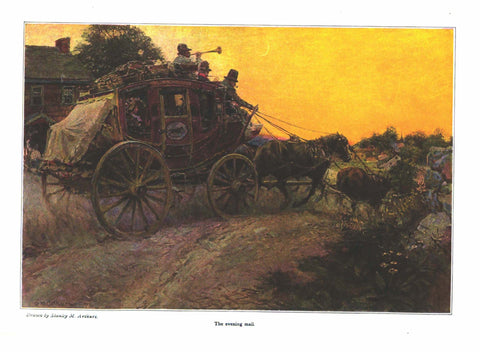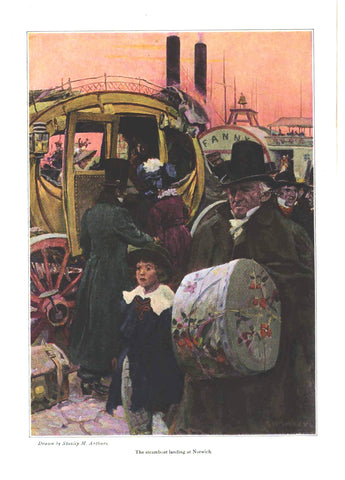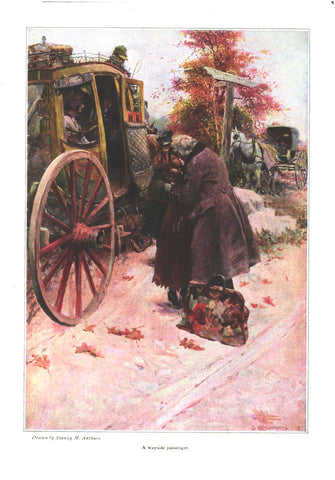George Matthews Harding story illustration for Harper's Magazine (1911): a beautifully framed antique
$185.00
By George M. Harding
For "Wreckers of the Florida Keys" by the Artist
Harper's Magazine. V. 123. June–November 1911
November issue. Page 275.
IMAGE INFORMATION
Image Size: H 9.25” x W 6.25”
Matted & Framed: H 15.25” x W 12.25”
Framed Price: $185.00
Packaging and shipping approximately $22.00
.
GMH probably met Norman Duncan (1871–1916) while sketching “some phase of fishing life” in Newfoundland in 1904. His friendship with Duncan brought the young artist one of his first commissions, being the job of illustrating Duncan’s story about a family that lived in a fishing village in Newfoundland. The Cure of Hezekiah appeared in a 1907 issue of Harper’s Magazine.
The first of his own stories that GMH illustrated appeared in the April 1909 issue of Harper’s Magazine. When Our Ship Went Down contained GMH's firsthand account of a seal hunting expedition into the frigid arctic. During the voyage, the vessel carrying the artist, the Grand Lake, became trapped in flowing ice. Pressure from the ice eventually crushed its reinforced hull, and on April 4, 1908, the Grand Lake sank. GMHs gripping account of the fiasco proved that he was a first-class storyteller. Over the next several years, Harper’s gave him more assignments that took him around the world.
"Wreckers of the Florida Keys" appeared in the magazine’s November 1911 issue. The illustrations that accompanied this story are in the storytelling style of GMH's instructor, Howard Pyle. Following HP, GMH used slanting lines and contrasting lights and darks to create the sense of motion and capture the viewer’s attention. He filled his canvas with details concerning both the scavengers who were stealing the grounded vessel’s cargo and the goods they were stealing. Everywhere the viewer looks, he/she discovers something interesting about the piratical event.
Even though the Age of Color dawned a few years before Harper’s published this story, it reproduced GMB’s illustrations in a simple red tint rather than with a full four-color halftone process. Why? There are couple possible explanations. The first is that the artist produced his illustration in a red tint rather than in full color. Time could have been a consideration here. Or maybe GMH had not have a full studio set up in the sweltering Keys. If GMH sent the printer a red tint underpainting, then the printer had no choice but reproduce it in red and black. By the way, I have seen one of the original illustrations GMH produced for Harper’s, and it was a red tint underpainting.
On the other hand, GMH may have produced his original image in full-color. In this case, the printer had the option to reproduce the piece as a four-color halftone or minimize the expense by using a single filter to produce the red tinted image. Since GMH’s illustrations were usually reproduced in single color tints, it seems the artist and the published agreed to reproduce them this way. Perhaps it was a matter of establishing a distinctive style for the globe-trotting artist.








